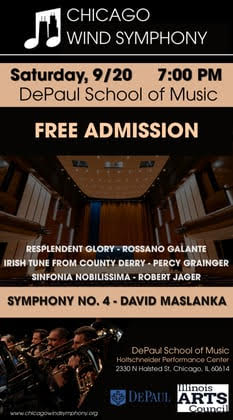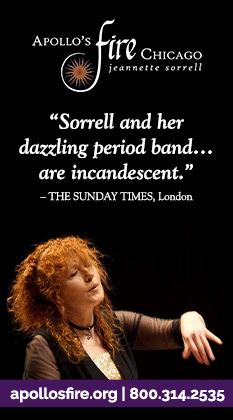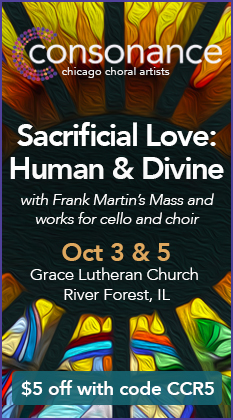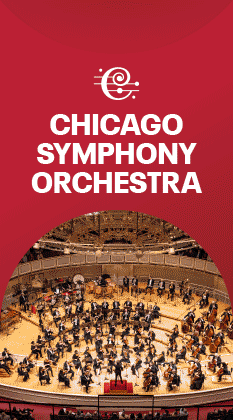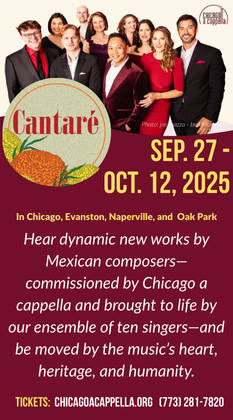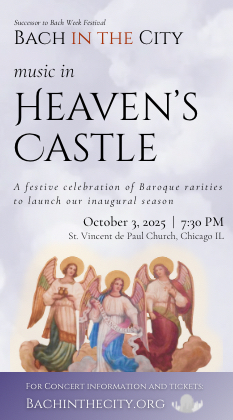Eloquent debuts for conductor Lewis, Clyne concerto with Grant Park Orchestra
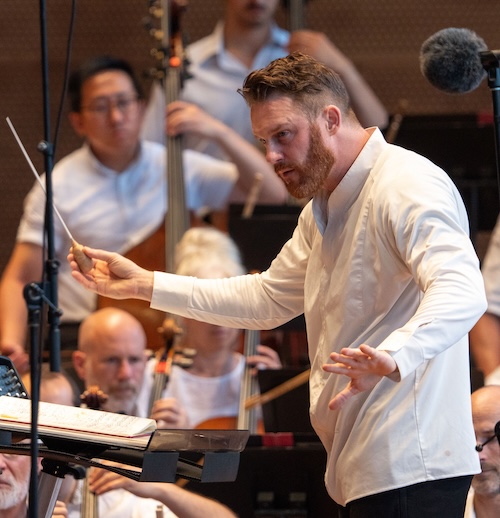
As the Grant Park Music Festival season hits the halfway mark, an exceptionally strong lineup of guest conductors has emerged, and that’s been salutary to the performances by the Grant Park Orchestra.
The concert on a rain-dampened Wednesday evening at the Jay Pritzker Pavilion in Millennium Park added another impressive newcomer to the roster, Courtney Lewis. Born in Belfast, U.K. (he shares his birthplace with Grant Park Chorus director Christopher Bell), Lewis is music director of the Jacksonville Symphony Orchestra and is rapidly adding engagements with major orchestras and opera houses to his resume.
He is one of the favored few with the leadership skills and unfussy musical command needed to inspire the Grant Park instrumentalists to give of their best under the limitations of a tight rehearsal schedule. Lucid of beat, firm of rhythm, articulate of gestures, Lewis has an impeccable ear and a probing way of bringing out relevant detail without impeding linear continuity. Playing to the music rather than the gallery is most definitely his style.
All this made for illuminating results in an unusually interesting program, two-thirds of which held works by British-born composers.
The centerpiece was Dance (2019), a de facto cello concerto in five movements by Anna Clyne, a former Chicago Symphony Orchestra composer-in-residence. Based on poems by the 13th century Persian poet Rumi, the suite-like concertante work is philosophically linked to the idea of dance as an expression of both joy and pain. The work arose from a creative collaboration between Clyne and its dedicatee—the incisive Israeli-American cellist Inbal Segev, completing her Grant Park season residency on this occasion.
Dance manages to sound new and old at the same time, with repeated nods to classical tradition in its use of chorale- and passacaglia-like material, along with pointed references to Segev’s cultural heritage as an Israeli-American, as well as Clyne’s own multicultural roots. The serene opening movement breathes the kind of plain-spoken simplicity of Aaron Copland in his open-prairie mode, set off by the agitated arpeggios of the second movement whose restless agitation is framed by what feels like direct quotations from Shostakovich’s Cello Concerto No. 1.
And so it goes—from the warm-hearted cello cantabile of the third section, through a fourth movement that builds a rich crescendo of sonority sparked by skittering soloistic bravura, to a driving, darkness-to-light final movement (“when you’re perfectly free”). Centered around Israeli folksong (or a semblance thereof) yet filtered through a distinctly American sensibility, the finale is complete with col legno snaps of strings and a slyly jazzy aside from the concertmaster.
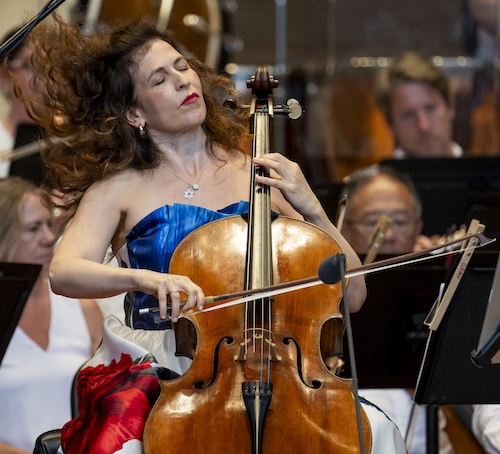
Accessible, ever-surprising and ingeniously crafted, Dance is already well on its way towards becoming a contemporary classic, having been performed some 80 times, more than 40 of those by Segev herself. She proved herself wondrously attuned to its inner and outer workings, in a brilliant musical conversation with Lewis and his alert orchestral forces. One could not imagine this absorbing piece receiving more fiercely committed artistry than what the cellist brought to it.
Segev acknowledged the roaring audience reception by awarding them the Sarabande from J.S. Bach’s Third Cello Suite as a solo encore. Her Bach was as deeply considered as her Clyne.
The Enigma Variations, Edward Elgar’s most popular work, indeed his masterpiece, consists of a theme and 14 variations. Each variation represents one of the composer’s friends or loved ones—the first, a portrait of his wife; the last, of Elgar himself. The “enigma” of the title refers to the actual theme of the piece, never heard, which was said to combine with the written theme, if only in the composer’s mind. Although generations have speculated as to the tune’s identity, Elgar took the tantalizing secret to his grave.
Every self-respecting British conductor takes up this great score at one time or another, and Lewis, with his full-blooded and idiomatic account, proved himself one of the most convincing contemporary interpreters this critic has heard. The trick here is to characterize each portrait vividly without upsetting organic unity. This Lewis managed with a sure hand, conveying his evident love of the piece through the flexibly paced, warmly flowing, at times even eloquent account he drew from the orchestra.
The famous “Nimrod” variation conveyed all the nobility of feeling, while the eruptive virtuosity of fast variations such as “Troyte” was nicely set off by the delicacy and poetry of slower, more delicate variations like “Dorabella” and especially the tender Romanza. Lewis elicited solid contributions from every department of the orchestra.
Johann Strauss Jr.’s Die Fledermaus Overture was the odd man out in this context. Regardless of its having next to nothing in common with the rest of the music on the program, the pops staple turned out to be a perfectly agreeable summer-concert curtain-raiser—fizzy, ebullient and gracefully Viennese of phrasing.
If there’s any justice in the orchestral business, the greatly gifted Lewis will be invited back to the Grant Park festival podium at the earliest opportunity.
The Grant Park Music Festival continues with Keri-Lynn Wilson conducting works by Tchaikovsky, Prokofiev and Mykola Lysenko, with violin soloist Augustin Hadelich, 6:30 p.m. Friday and 7:30 p.m. Saturday. grantparkmusicfestival.org
Posted in Performances
